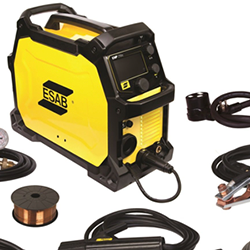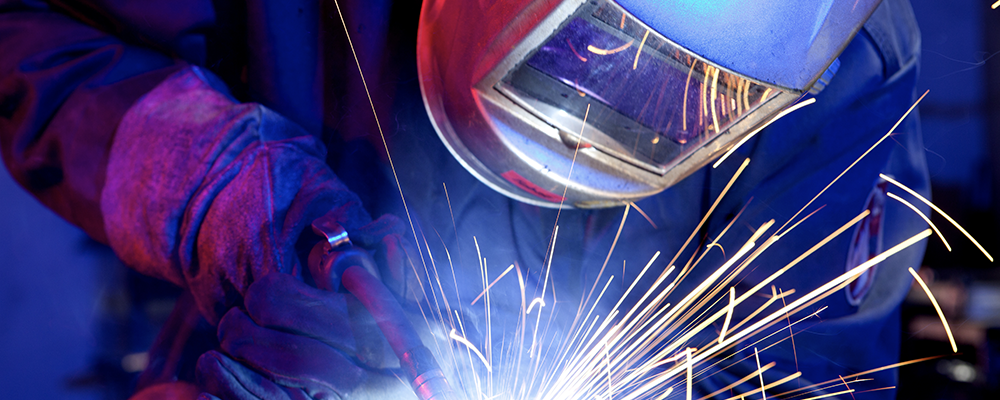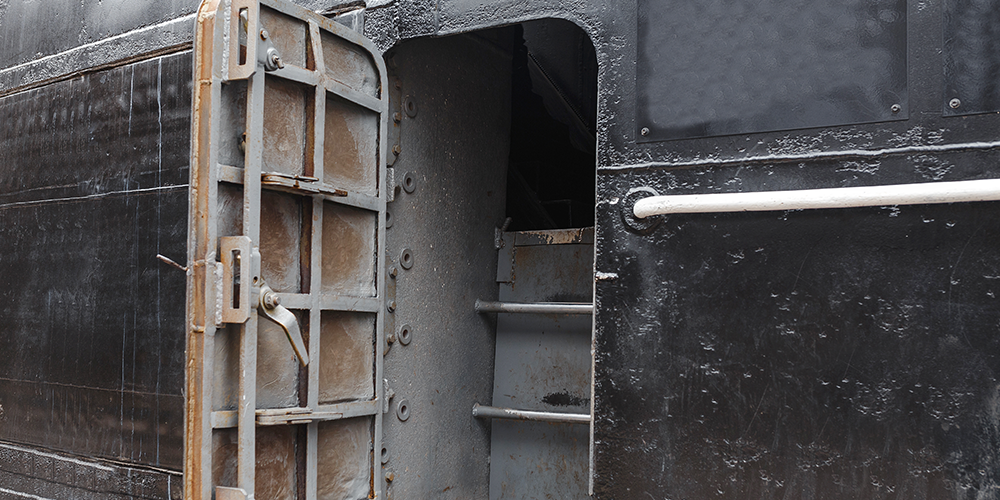Human flesh and an inferno of over 5000 degrees, separated only by a few inches. For a thousand seconds, the Apollo astronauts would wait with bated breath as their ship re-entered back into the atmosphere. Because of the immense speeds of the rocket, even friction caused by air molecules would be enough to melt unprotected skin in an instant. This is just a few minutes of a several day mission where a single weld could have destroyed history as we know it.
Neil Armstrong or Buzz Aldrin, these are the heroes of NASA’s journey to the moon. But the insane task of manufacturing a rocketship often gets overlooked. It’s shocking to realize the amount of welding, innovation and expertise that went into getting the astronauts off the ground.

In the 1960s, America was locked in a race with Russia. The possibilities of space travel (and warfare) seemed limitless. Was it possible to live in space? Was it possible to spy on other countries? Was it possible to attach a giant laser to a satellite and take the world ransom? With the recent invention of the atomic bomb, America’s leadership could not afford to allow another country to answer these questions.
But going to space proved a daunting task. Weight was an extreme issue as every pound carried to low orbit cost more than $10,000 in today’s money. This meant rivets were quickly out of the picture. Our rockets would have to be welded. In order to keep the construction light, the rocket ship was designed with metal panels that got increasingly thinner as you moved towards the top of the vessel. At the time, welding together materials of differing thicknesses was extremely difficult.
Adding to the stress of the situation, the eyes of the nation were glued on America’s attempts to get to the moon. A single bad weld could cause a catastrophic failure. A faulty problem with wiring in the first Apollo mission led to a fire, killing all 3 astronauts and suspending the program for an extended amount of time. If you ever thought your boss was a stickler, he’d be a kitty cat compared to what the early rocket welders faced.
During construction, it was considered almost impossible to successfully weld a few centimeters at once. Anything less than perfect had to be redone. It was described as a “maddening cycle of cut-and-try operations.” Often, warpage from so many attempts would cause the piece to become unusable and entire sections would have to be redone.
Through the painstaking sweat and agonizing revisions, the rules on welding were completely re-written. Originally, welding machines were not designed to combine plates of varying thickness. Engineers ended up taking apart their machines and rebuilding them completely, designing some of the mechanisms that modern welding machines still use today. Because any contaminant could cause a weld to fail inspection, special portable rooms were invented to encompass the welder. All particles would be forced out of the air with a pressurization system.

Even the rules dictating the social norms were rewritten for welders. One of NASA’s best welding engineers was a woman named Margaret Brennecke. At the time, a woman in such a high position was somewhat of an anomaly. But Margaret’s extensive skill set and irreplaceable expertise made her an essential part of the spaceships’ construction. Even still, she used her nickname of “Hap” rather than her real name so that others wouldn’t automatically disregard her reports upon seeing a female name. This led to other’s calling her “Miss Hap” which eventually became “Mishap,” a joke which the safety inspector did not enjoy.
When the Apollo 11 mission finally touched down, the rest of America saw astronauts and mission control. They saw presidential speeches. But what we see are thousands of the best welders in the world struggling with an impossible mission to create the perfect weld, take a quick break for lunch, then do it all over again. Since its invention, welding has become an essential part of every historical event. And that’s not changing anytime soon.
Welding machines have gone a long way from the first manned-rocket missions. New inventions like sMIG technology in ESAB’s new machines or Auto-set features from Miller have made producing the perfect bead a much simpler task than it was 60 years ago. Check out a few of the most advanced welding machines on the market and see how far we’ve come.








